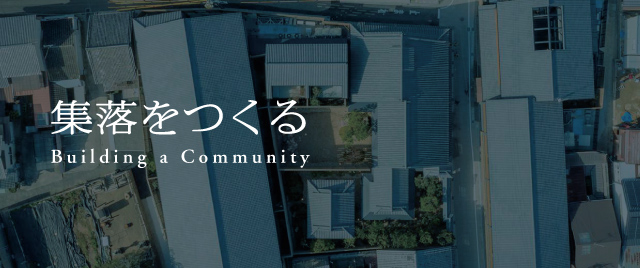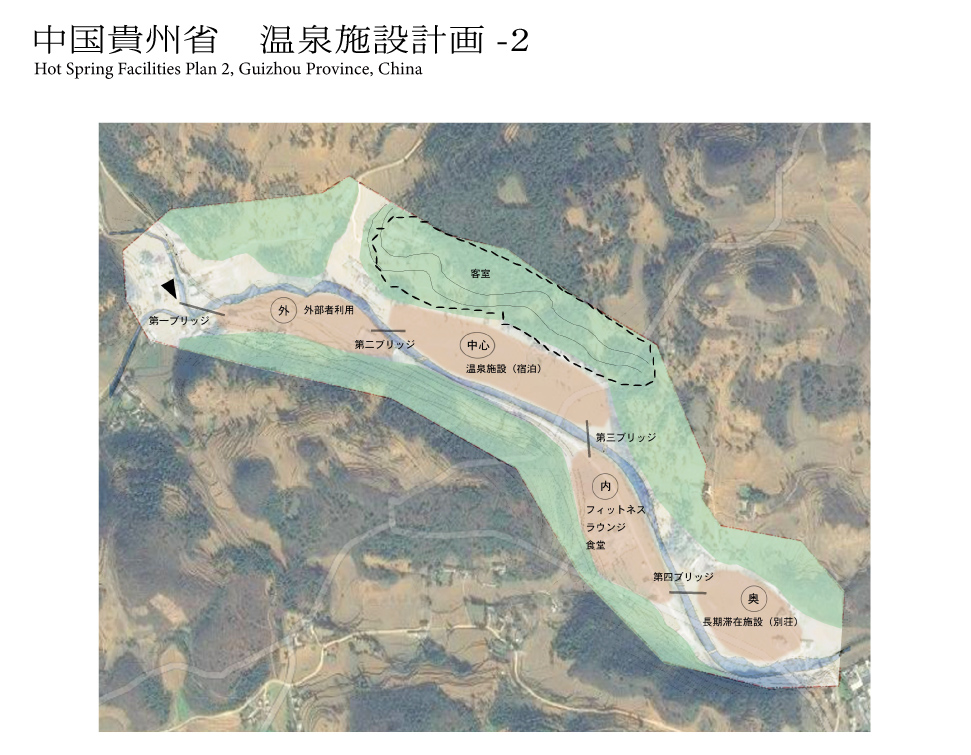




中国貴州省 温泉施設計画-2
(2017年 計画/構想のみ)
同じ貴州省からの依頼で提案した、かつて集落があった場所を利用した、温泉リゾート計画です。「温泉施設計画-1」の計画地とは違い、山に囲まれた川沿いの細長い敷地で、観光地としてだけでなく、最終的にはあらたな集落として成り立つように提案をしました。敷地を縦断する川の下流から上流まで4つの橋をかけて、下流の第1ブリッジを渡ると誰もが利用できる各種店舗などがあり、第2ブリッジの先に温泉と宿泊施設、さらに第3ブリッジの先に宿泊客が利用する食堂やフィットネスクラブなどの施設、最も上流の第4ブリッジを渡ると長期滞在者向けの別荘があるというプランです。従来型のリゾート計画のように、ホテルを中心にした観光産業だけで成り立たせるのではなく、さまざまな業種の店舗や企業がここで事業を営み、都市部と二拠点生活をする別荘利用者が長期的に暮らすことで、ひとつの産業に頼らない集落を形成することができると考えました。具体的な計画には関わりませんでしたが、前出の計画とともに、集落をつくる視点で開発する、タイプの違うふたつの温泉施設として提案しました。
Hot Spring Facilities Plan 2,
Guizhou Province, China
(2017, planning/conception only)
In another project consigned by Guizhou Province, we conceived a plan to build a hot spring resort on the site of a former community. Unlike the project site in Hot Spring Facilities Plan 1, we proposed facilities that would not only be a tourist destination but could eventually become a community on a long and narrow riverside site surrounded by mountains. The plan included four bridges crossing over the river that ran through the site from downstream to upstream. Anyone could cross the first downstream bridge to an area containing various stores and the like; the second bridge would lead to hot spring and accommodation facilities; overnight guests could use the third bridge to access a restaurant, fitness club, etc.; and the fourth bridge in the uppermost reaches would connect to leisure homes for long-term guests. Rather than having simply a hotel-centered tourism industry like in conventional plans, we aimed to form a community not dependent on any one industry, in which various stores and companies could conduct business and where leisure home users seeking to have two living bases with their city homes could stay for extended periods. Although we had no involvement in the specific planning, we proposed two novel hot spring facilities based on the perspective of community development.





